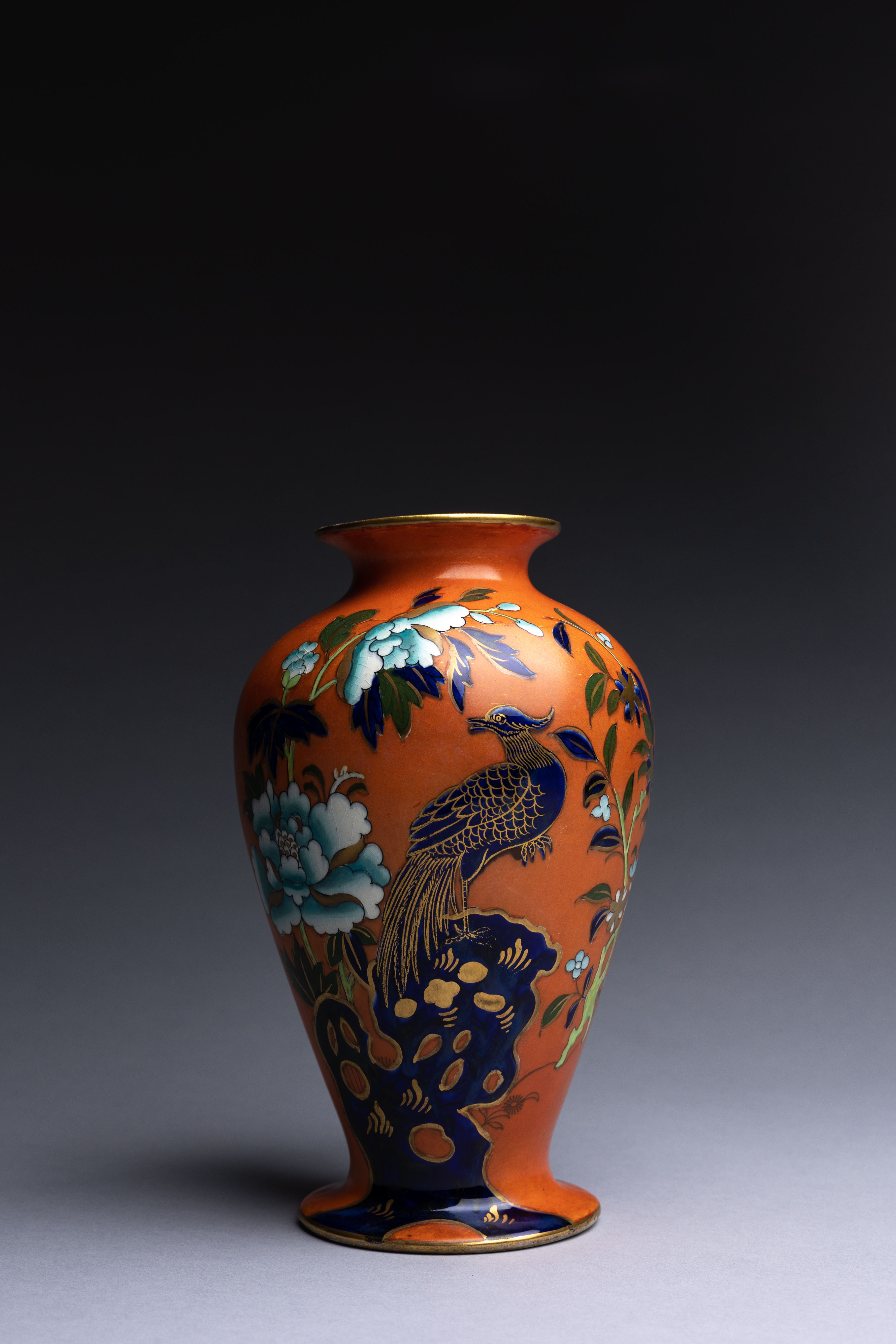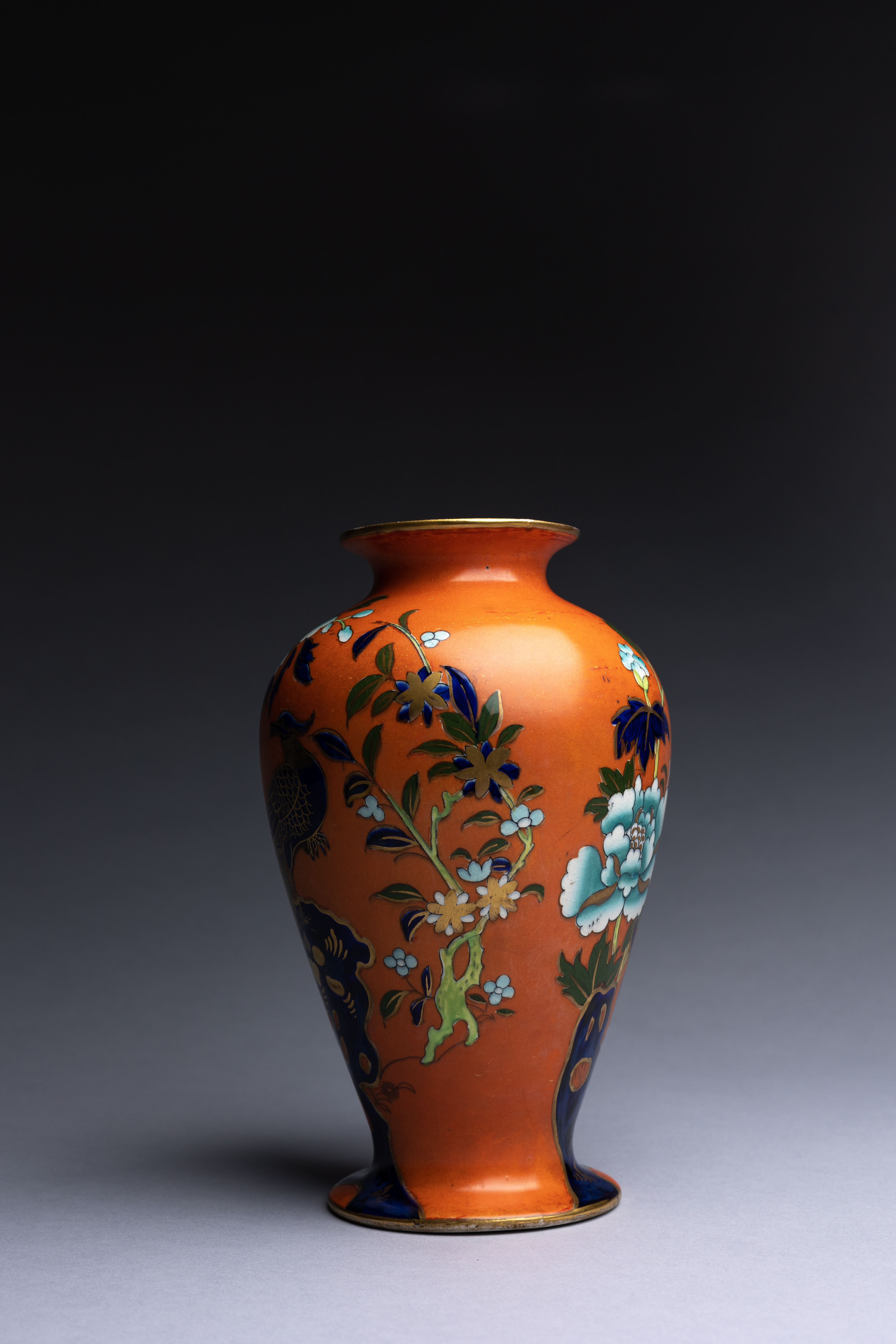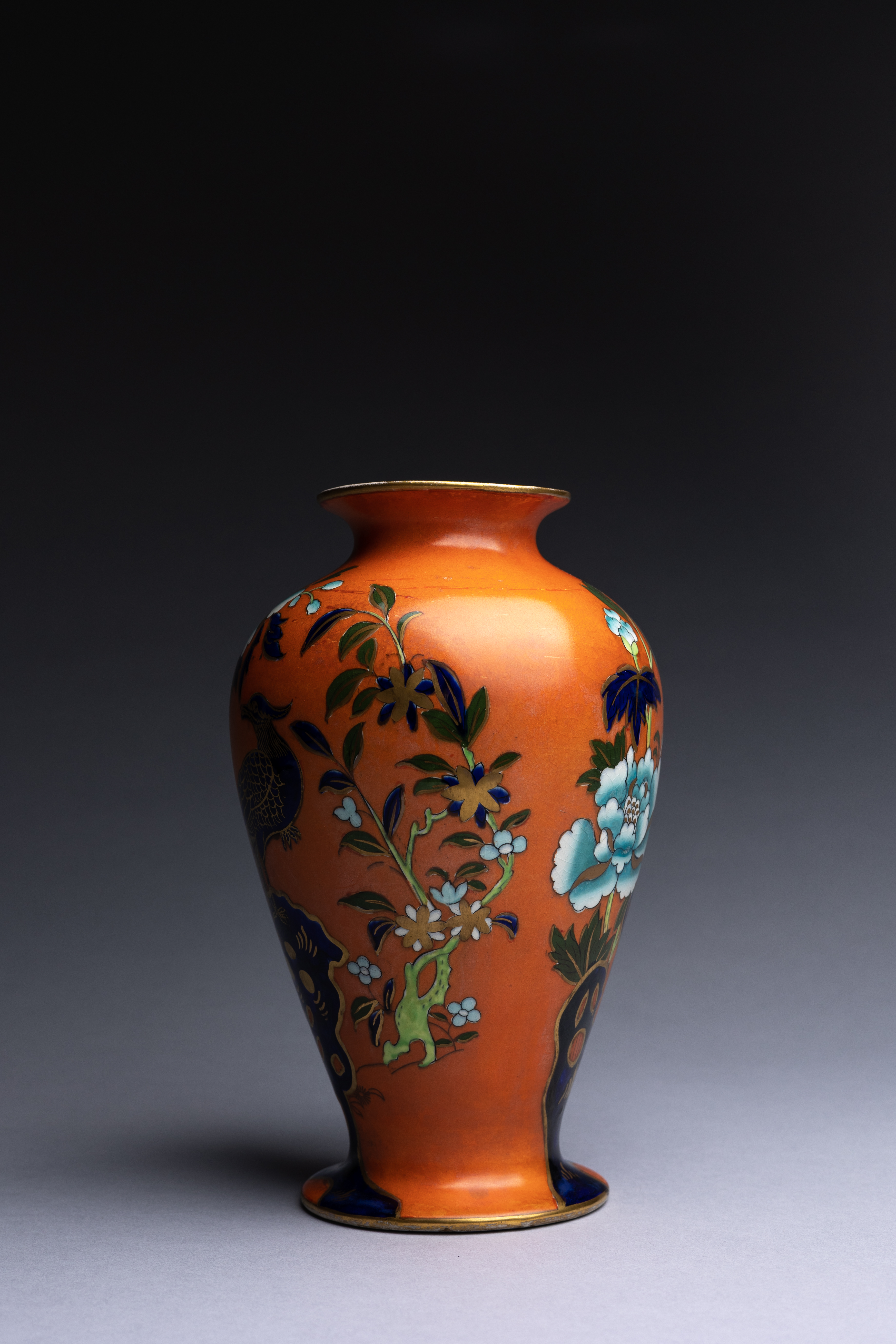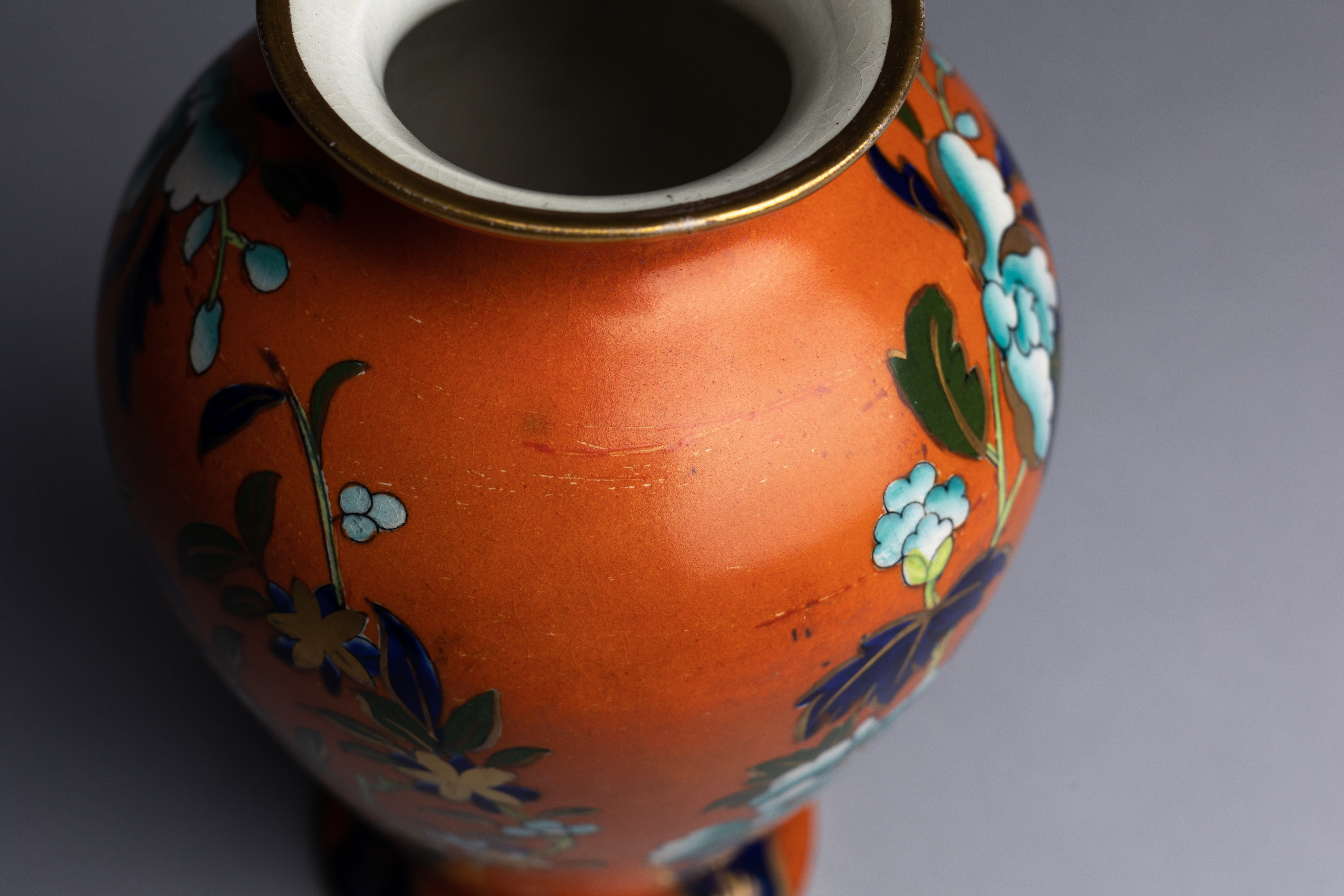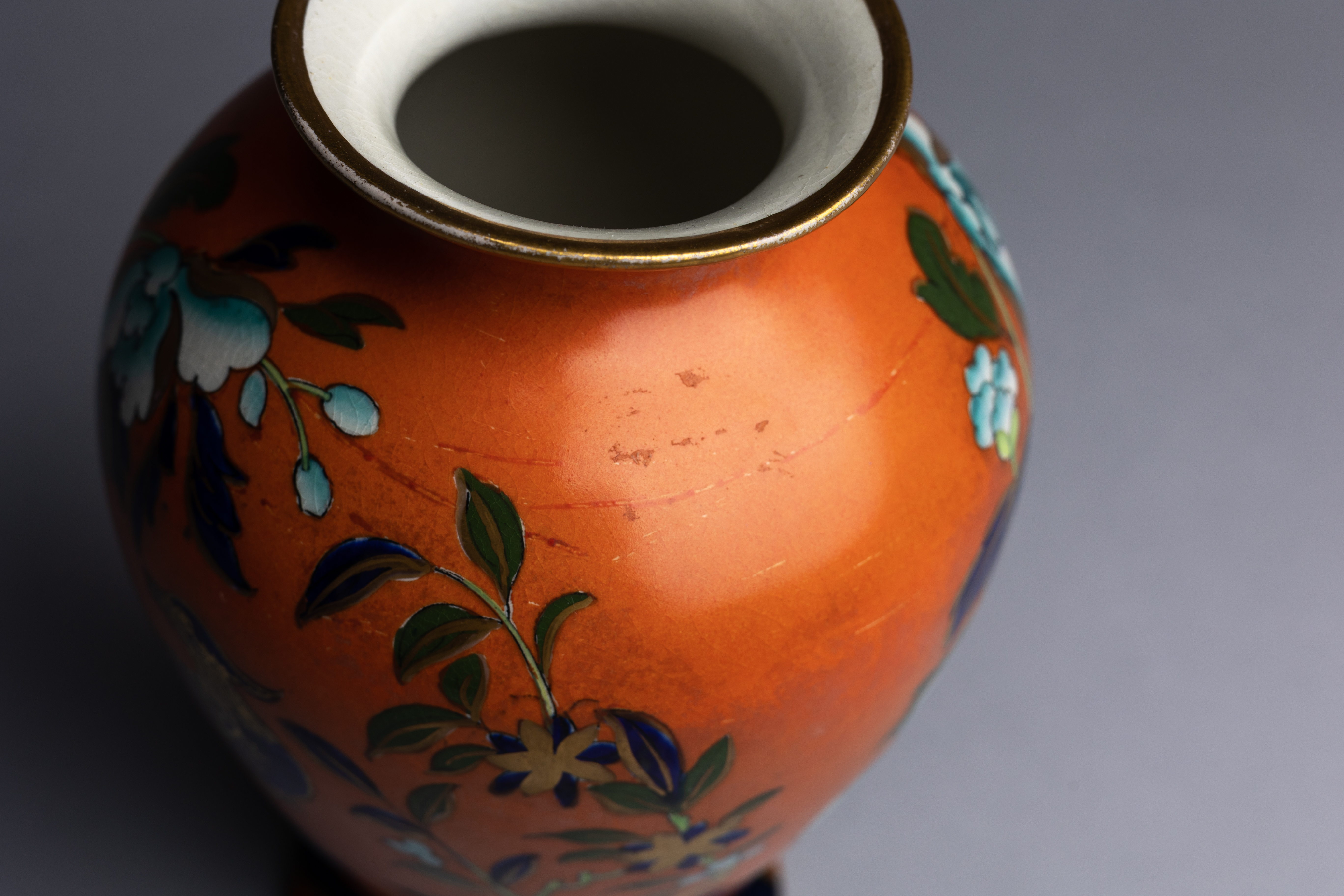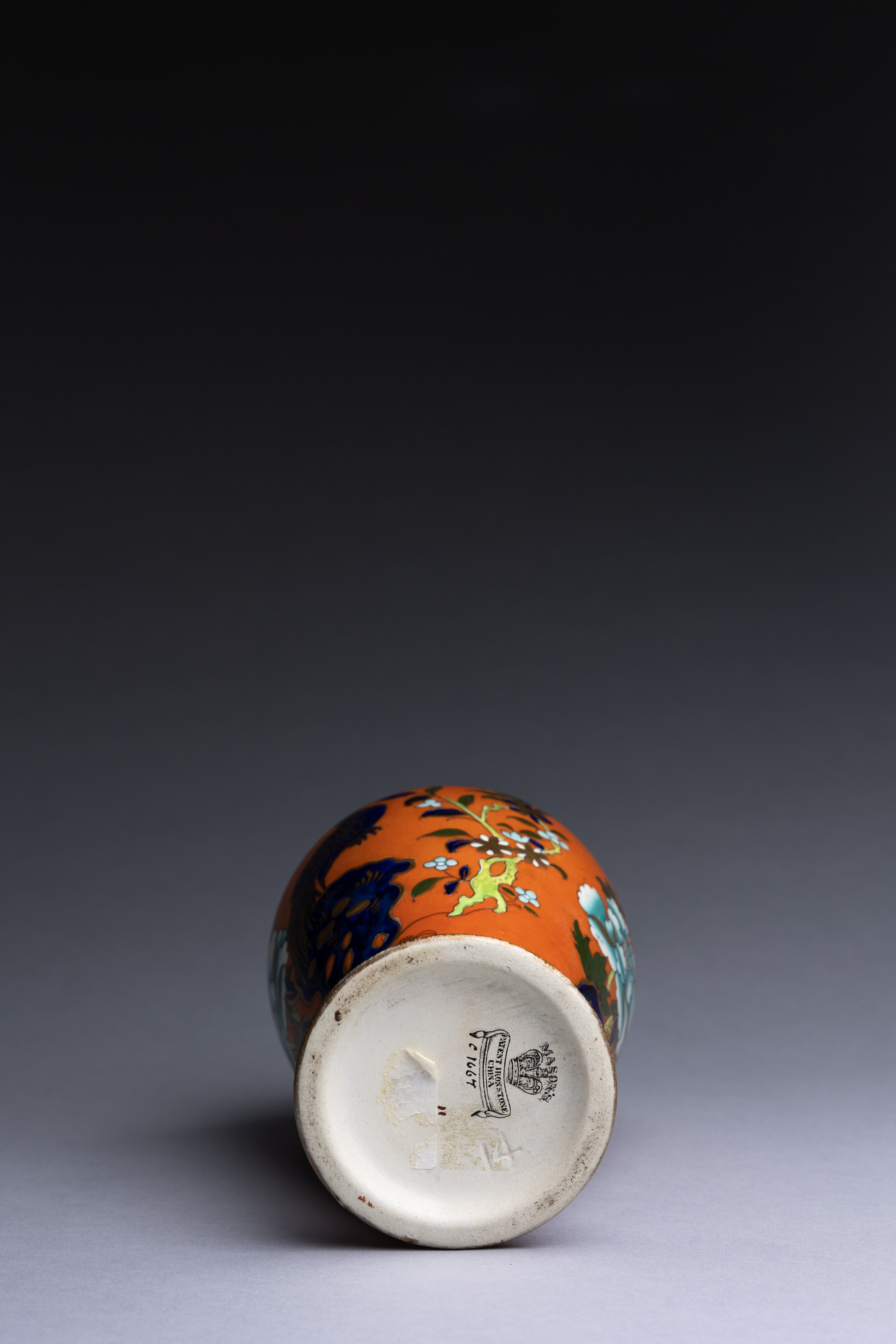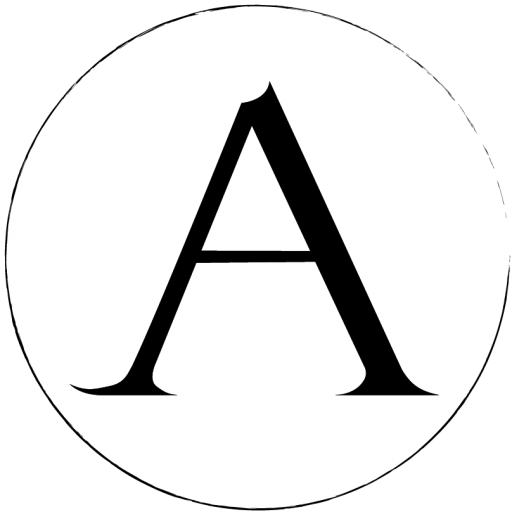This Masons ironstone pottery vase features an adaptation of the circa 1840 ‘Pheasant’ pattern, though reimagined completely as a bold statement with a striking orange glaze underneath cobalt, turquoise, and gold details.
This Masons ironstone pottery vase features an adaptation of the circa 1840 ‘Pheasant’ pattern, though reimagined completely as a bold statement with a striking orange glaze underneath cobalt, turquoise, and gold details.
Essay
Originally introduced as a less expensive alternative to Chinese porcelain, ironstone became a desired ceramic medium in its own right throughout the 19th and 20th centuries. Ironstone’s name does not come from the mineral, although at one point historians believed that the clay recipe contained iron. In actuality, ironstone is a vitrified earthenware and was so named after its durability and “iron” strength. Many English and American factories produced ironstone, and monikers for this ware abounded: English porcelain, new stone, opaque porcelain, semiporcelain, stone china, and white granite were all used to refer to different recipes for ironstone. The allusion to Chinese porcelain as well as iron strength is quite evident in these terms, reiterating the desired connection to both porcelain and durability.
William Turner of Longton, Staffordshire successfully manufactured the first ironstone wares in 1800. Upon his factory’s bankruptcy, Turner sold his patent for ironstone to Josiah Spode II, who beginning around 1813 began producing “Stone China” to great success. Around that same time, Charles James Mason obtained a patent to produce “English porcelain”.
Mason’s Patent Ironstone China was introduced in 1813. Mason’s ironstone proved immensely popular at its introduction, however the factory failed to keep up with the demand for new and innovative designs. In 1848, the company went bankrupt and the factory’s contents were sold at auction to Francis Morley. Ten years later, Morley formed a partnership with his son-in-law Taylor Ashworth. After Morley’s retirement in 1862, Ashworth continued the factory in partnership with his father, George.
G. L. Ashworth & Bros. retained Mason’s original printing plates and other equipment and continued to produce ironstone, which had become popular once again, well into the 20th century. This baluster vase features an adaptation of Mason’s circa 1840 ‘Pheasant’ pattern, redesigned by the Ashworth Co. in a bold new colorway.
BT
Condition
Very good. Light radial scratching to orange glaze just under vase shoulders.
For a detailed condition report, please contact us.
Provenance
Curator’s Note
We also have a dinner plate by Mason’s Ashworth in this pattern and color from the Fortunoff Collection.
Originally introduced as a less expensive alternative to Chinese porcelain, ironstone became a desired ceramic medium in its own right throughout the 19th and 20th centuries. Ironstone’s name does not come from the mineral, although at one point historians believed that the clay recipe contained iron. In actuality, ironstone is a vitrified earthenware and was so named after its durability and “iron” strength. Many English and American factories produced ironstone, and monikers for this ware abounded: English porcelain, new stone, opaque porcelain, semiporcelain, stone china, and white granite were all used to refer to different recipes for ironstone. The allusion to Chinese porcelain as well as iron strength is quite evident in these terms, reiterating the desired connection to both porcelain and durability.
William Turner of Longton, Staffordshire successfully manufactured the first ironstone wares in 1800. Upon his factory’s bankruptcy, Turner sold his patent for ironstone to Josiah Spode II, who beginning around 1813 began producing “Stone China” to great success. Around that same time, Charles James Mason obtained a patent to produce “English porcelain”.
Mason’s Patent Ironstone China was introduced in 1813. Mason’s ironstone proved immensely popular at its introduction, however the factory failed to keep up with the demand for new and innovative designs. In 1848, the company went bankrupt and the factory’s contents were sold at auction to Francis Morley. Ten years later, Morley formed a partnership with his son-in-law Taylor Ashworth. After Morley’s retirement in 1862, Ashworth continued the factory in partnership with his father, George.
G. L. Ashworth & Bros. retained Mason’s original printing plates and other equipment and continued to produce ironstone, which had become popular once again, well into the 20th century. This baluster vase features an adaptation of Mason’s circa 1840 ‘Pheasant’ pattern, redesigned by the Ashworth Co. in a bold new colorway.
BT
Very good. Light radial scratching to orange glaze just under vase shoulders.
For a detailed condition report, please contact us.
We also have a dinner plate by Mason’s Ashworth in this pattern and color from the Fortunoff Collection.
This item ships free to the continental US, and globally for a flat-rate fee of $75.
All objects are packed with utmost care by our team of expert fine art shippers. All items are shipped with parcel insurance.
For more information on our shipping policies, please visit our FAQ Page.

